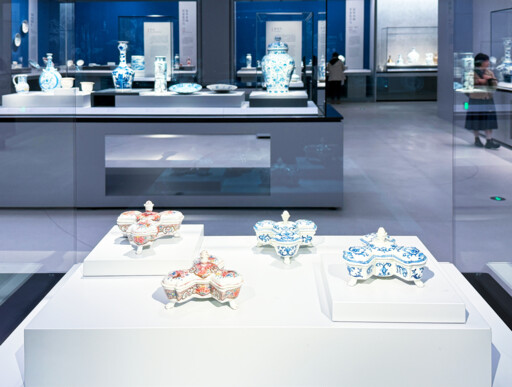


Int’l scholars champion diverse models of modernization

Global ceramic artifacts on display at Shanghai Museum Photo: IC PHOTO
On June 21, the Academic Conference on Modernization Process and Human Civilization convened in Jinan, east China’s Shandong Province. Scholars from China, the United States, Russia, Vietnam, Laos, and other countries engaged in in-depth discussions on the plurality of modernization paths, inter-civilizational exchanges and mutual learning, and the global significance of Chinese modernization.
Modernization rooted in diverse civilizations
Modernization is not a process of replicating a single model, but a creative endeavor rooted in the soil of diverse civilizations. According to Zou Guangwen, a professor from the School of Marxism at Tsinghua University, the experience of many late-developing countries shows that modern civilization can take shape within the framework of national traditions, while also enabling the contemporary transformation of traditional culture. Chinese modernization, Zou noted, presents the world with a successful and distinctive model. Its cultural significance lies in achieving a balance between cultural particularity and historical universality, especially in preserving and honoring each nation’s cultural heritage and historical experience.
Modernization cannot be evaluated solely by metrics like economic growth or technological advancement; it must also encompass deeper dimensions such as cultural depth, national identity, and human values, emphasized Nguyen Huy Hoang, dean of the Graduate School at the Vietnam Academy of Social Sciences. In practice, there is no universal route to modernization. More and more countries are departing from the so-called “Western model” and are instead exploring modernization paths grounded in their own histories and political institutions.
Chen Peiyong, a professor from the School of Marxism at Peking University, pointed out that in the process of modernization, every civilization is unique, possesses inherent value, and has its own developmental path and future potential.
He Zhonghua, a professor from the School of Philosophy and Social Development at Shandong University, proposed viewing modernization through the lens of civilizational transformation in world history. The rise of Western modernity, He said, was not an isolated phenomenon—it could not have emerged without the exchanges and mutual learning between Eastern and Western civilizations. Modernization, in this view, is both a prerequisite for and a product of inter-civilizational interaction. A full understanding of modernization, He concluded, requires a global historical perspective and a deep appreciation of civilizational pluralism.
Chinese modernization brings global benefits
As a new paradigm in the evolution of human civilization, Chinese modernization—its defining characteristics, accomplishments, and global significance—emerged as a central theme of scholarly discussion at the conference.
Chinese modernization is not an exclusive pursuit for its own benefit, said Zhang Ji, a professor from Hebei Normal University. He highlighted that the Chinese approach to modernization upholds principles of equality, openness, and inclusiveness toward different civilizations. China actively promotes dialogue, mutual learning, and reciprocal inspiration among cultures, rejecting notions of “civilizational superiority” and the so-called “clash of civilizations.” In doing so, it has fostered a more harmonious environment for global civilizational exchanges.
Chinese modernization enriches the diversity of world civilizations, offering new points of reference and insights for inter-civilizational dialogue, Zhang affirmed.
Beyond improving the wellbeing of its own people, Chinese modernization has also contributed fresh momentum and new opportunities to global development. According to Larkhamsai Souphavady, director of the Teaching Management Department at the Lao National Academy of Politics and Public Administration, the China-Laos Railway has carried more than 50 million passengers since its launch [in December 2021]. The railway has significantly improved Laos’s connectivity with China and the broader global market, enabling wider international access for Lao specialty goods.
In addition to trade, Chinese companies have actively invested and established operations in Laos, collaborating across sectors such as infrastructure, agriculture, and manufacturing. These efforts, Larkhamsai noted, have brought renewed vitality to the Lao economy.
The symposium was sponsored by Shandong Normal University (SDNU) and organized by the School of Marxism at SDNU.
Editor:Yu Hui
Copyright©2023 CSSN All Rights Reserved